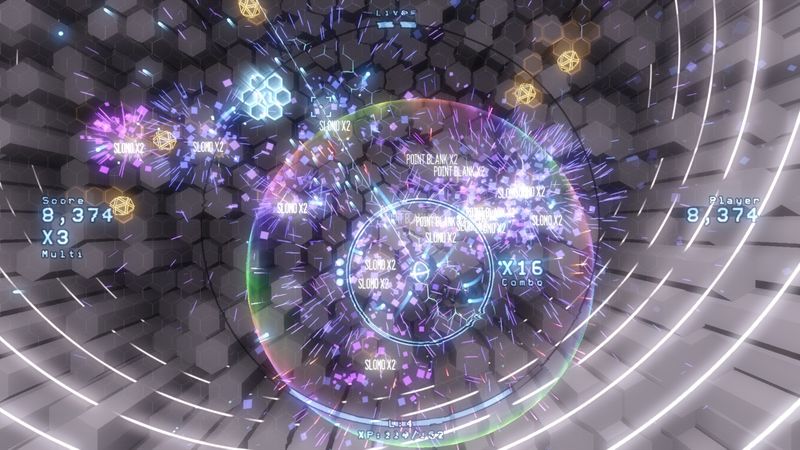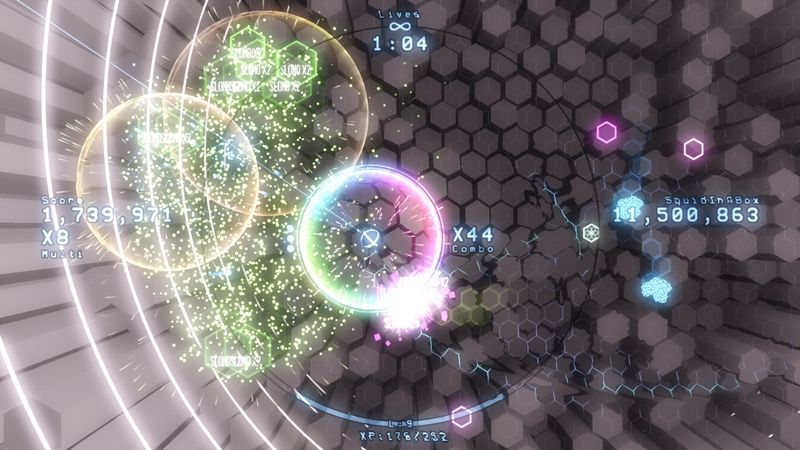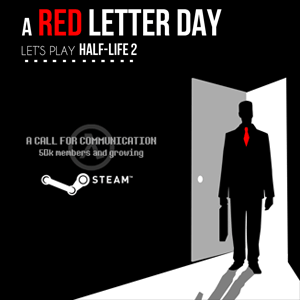I’ve gone on record as saying that Beat Hazard is the greatest twin-stick shooter of all time, and that’s a statement that I still stand by. But, with that said, the Achilles heel of the game has always been exactly what made it great: the levels created by the player’s own music. The problem is that players can pick music that leads to levels that are easy to score a lot of points on, but are not particularly difficult.
As the Steam description for Waves states, “Shooter fans deserve more.”
After playing the game, it’s obvious that to Waves‘s one man development team, Rob Hale, better means a serious shift in the scoring system.
Waves‘s combo system is non-linear and is the game’s main differentiation in an already crowded twin-stick shooter genre. What that means is that the game avoids the situation many late-game players in other games of its ilk face, namely that the score gets so high that a reset of the multiplier can turn extra lives into exercises in futility. The sheer number of enemies as well as complexity of this many attack patterns on screen make it nearly impossible to stay alive in order to score enough points to make any sort of meaningful impact on the final score.
The scoring system in Waves solves this problem, but is relatively complicated so stay with me.
First the game features a leveling system, taking place within each round, where killing enough enemies causes a multiplier pad to drop on the game board that when collected adds a multiplier to the permanent combo. Each enemy is worth one point and this point is then multiplied by the number of multiplier pads collected.
Easy enough. Lets forge onward.
The next aspect of the combo meter is based on player actions in-game. Enemies killed at point blank range — within a small ring around the little ball players control — are given a “times two” multiplier. The same can be said for kills made while in slow-motion as well as for kills using bombs. These “times two” point buffers are all stackable and compound with the master combo meter.
And here comes another combo meter…
Waves features yet another combo meter, the kill combo if you will. This meter kicks in whenever three or more enemies are killed in the span of a second, and continues to build as long as this rate of slaughter continues.
The important thing about all of the combo meters is that when the player dies, the only part of the meter that takes a hit is the kill combo. So while dying does carry a penalty, it does not ruin a game as the main multiply remains unaffected. This alleviates the issue wherein subsequent lives are spent trying to get back to where the player previously was as it takes literally the course of a second to get the kill combo back in place.
Now to many this may be seen as a move to attempt to coddle players and make the game more accessible to new players, and well… it is.
To hardcore genre-philes this may be seen as a potentially fatal mistake, but it’s not.
In the case of Waves these decisions actually improve on the genre in a fundamental way, due to the previously mentioned slow motion and bombs powers.
Slow motion in the game is manually triggered, and is debited from a power-up bar that refills slowly as the player stays alive, but is filled at a faster rate by collecting blue orbs left behind by downed enemies. Bombs are triggered by the player achieving a combo of 10 or more with a new bomb granted for every 10x on the combo meter and they only last as long as the combo does. As a result of of these two powers, players are rewarded generously for aggressive, offensive play (Chip Kelley loves this game). Scores increase exponentially as the rate of kills raises.
It’s a basic design philosophy shift, one where scoring rewards skillful play and risk taking over simple duration of survival.
The other important aspect of the aggression versus survival design decision is that the constant leveling multiplier is tied to the rate of enemy spawns. Once a player reaches, say level 13, opponents will always appear in the game at a rate that corresponds with the level the play is on until all lives are exhausted or the time limit is reached. This is opposed to most other games in the genre in which death sets the spawn rate lower. For high level players, in other games, this can mean minutes of slow, boring play upon death, not to mention absolutely obliterating any sense of rhythm that may have developed.
For most gamers this all may seem like rather pointless hairsplitting. To them, Waves will simply be a fun, Unreal 3 engine-powered twin-stick shooter with game modes that focus on scoring as many points as possible in a limited amount of time, as opposed to the marathon sessions present in most games of the genre. But to those who didn’t start dosing off during the proceeding paragraphs, the intricacies of the scoring system really do matter (so piss off!) and should be reason enough to give the game a serious look.
Just make sure you bring a controller, as the mouse movement is kinda wonky and a little slow. Then again, if you made it this far through the review, you were probably going to do that anyway.
Obligatory Consumer Report Style Game Review Points Below
Due to the fact that most gamer’s don’t want reviews that actually breakdown what makes a game awesome and would rather check out a review that reads like a back of the box features list. So here we go…
Do you like Geometry Wars? Did you say yes? I hope so. Strap in, because Waves is like that game, only this bitchin’ piece of gaming goodness (ending words with -ness, solid reviewing strategy) has 5 game modes for 5 times the fun.
The gang’s all here as far as standard modes are concerned: Survival mode with it’s endless time limit and enemies made the trip, there’s a Rush mode, which is exactly like survival only there is a ticking clock that is extended by killing enemies and Crunch Time in which the player has 3 minutes to go ape shit on some crazy colored geometric shapes.
Then there are the not so standard modes like Bombing Run in which the player cannot fire and is instead tasked with clearing enemies by hitting bomb power-ups that drop onto the field of play. It feels a lot like Every Extend Extra in a really good way (obligatory older game name drop). As well as my personal favorite game type, Challenge mode, which consists of 20 waves of enemies with bonuses given at the end of each wave (waves?! see what I did there?)
Controls are tight. Graphics are polished. Indie chip-tune soundtrack is bumpin’.
Since you didn’t read the 1150 odd words before this, you should buy this game. The text would certainly never help you glean if this game is right for you.
Score: 47 yellow geometric shapes out of 81 pink geometric shapes.
I am currently accepting challengers on all levels.
waves game torrent![Waves review I’ve gone on record as saying that Beat Hazard is the greatest twin-stick shooter of all time, and that’s a statement that I still stand by. But, with that said, […]](http://steamaddicts.com/wp-content/uploads/Waves-cover-616x308.jpg)



I feel like I was sold a new form of ice, convinced it was actually cubes of slowly dissolving Viagra, then reassured it was actually a male form of birth control that gave semen the ability to grant wishes.
lol